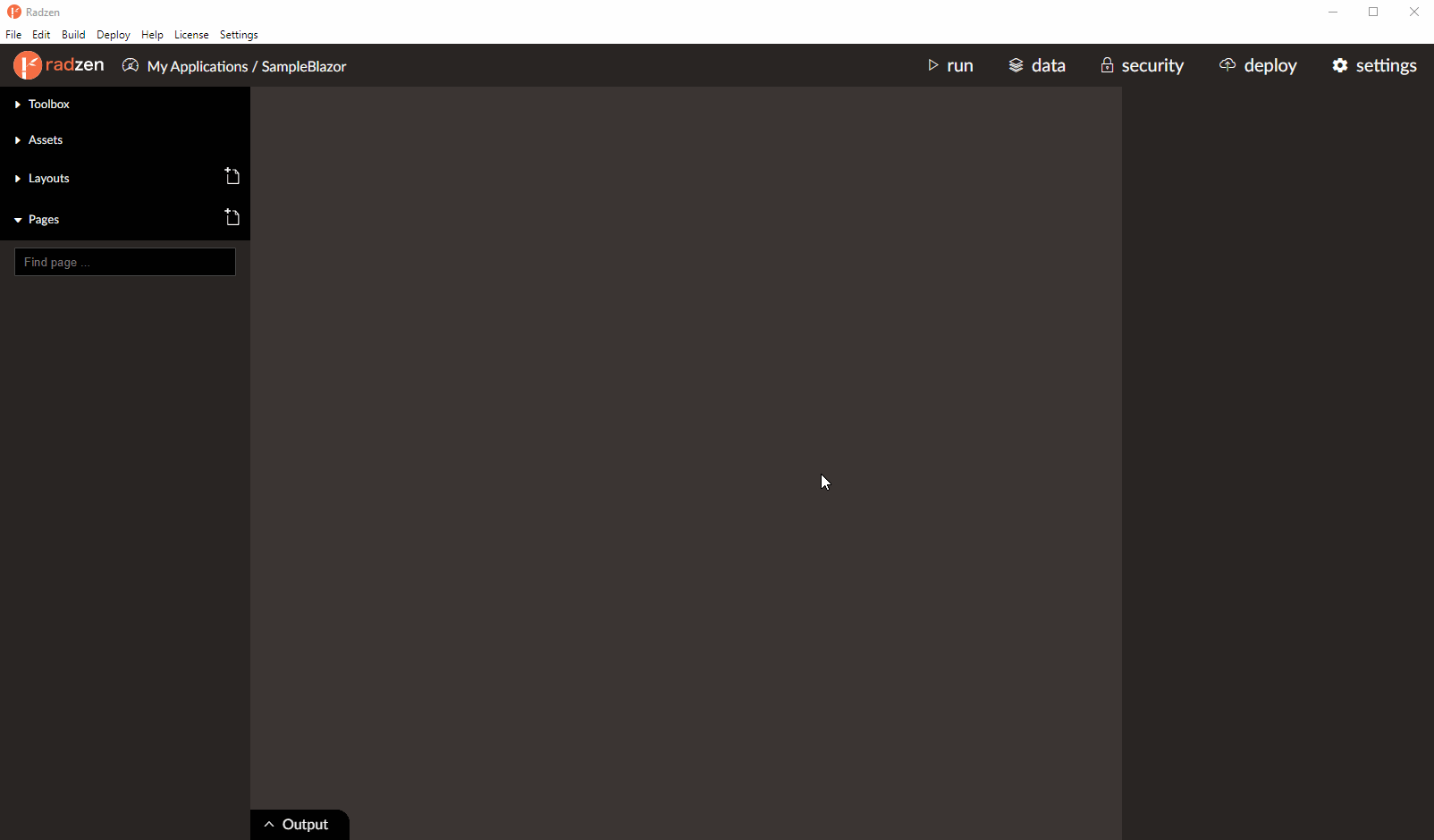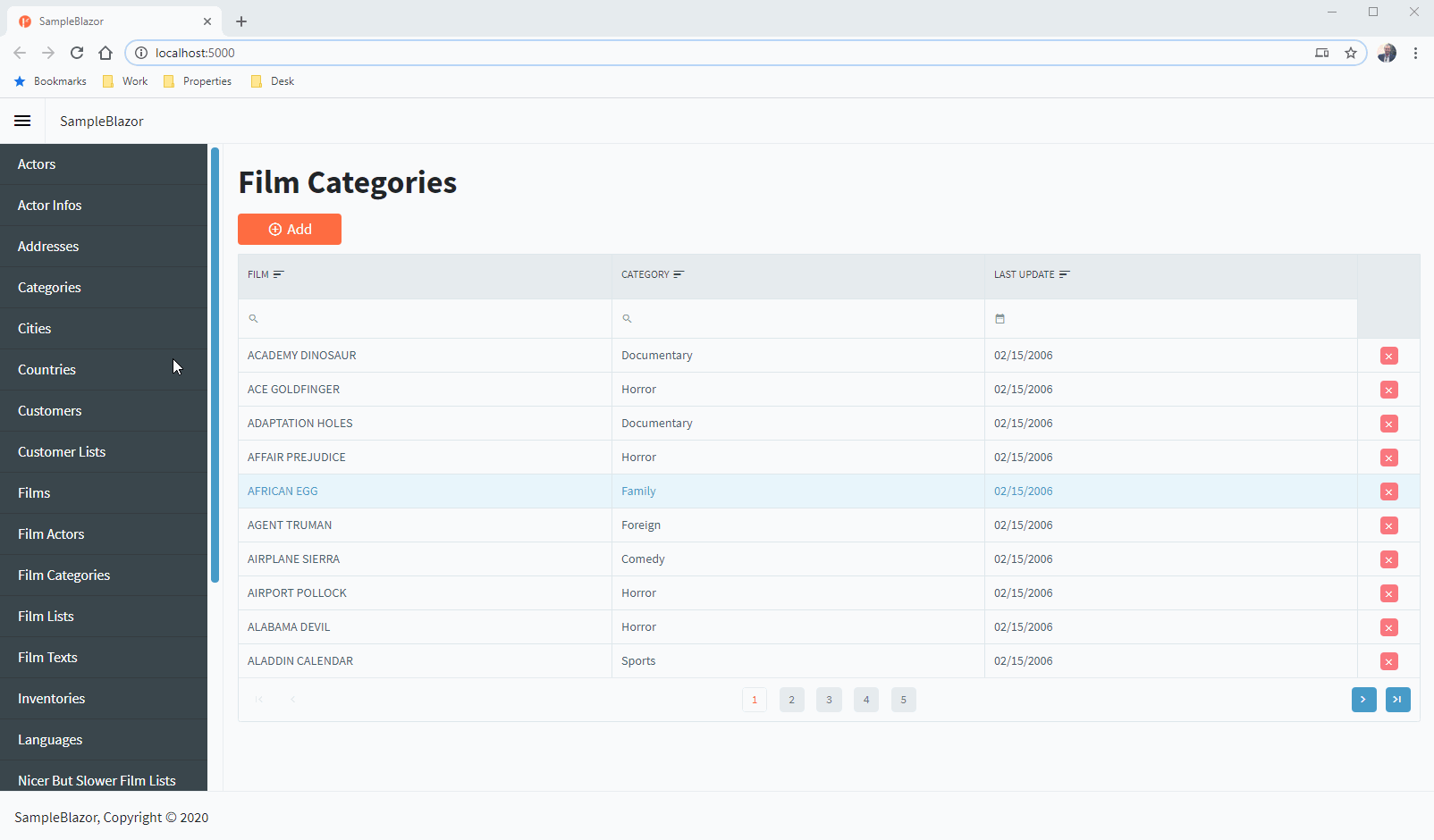MySQL (Blazor)
Radzen apps can connect to MySQL databases. All you need to do is specify the connection string. Radzen will discover the schema and will create a service which will expose the tables using Entity Framework context.
This tutorial will show you how to connect to a MySQL Server database, read, add, update and delete data.
Prerequisites
Make sure you have installed .NET SDK.
Quick video
How to build the application
- Step 1: Create and configure the application
- Step 2: Add the MySQL data source
- Step 3: Automatically generate CRUD pages
Step 1: Create and configure the application
Create a new Radzen application by following the first step from the quickstart guide.
Step 2: Add the MySQL data source
In this step we create a data source that connects to a MySQL database.
- Open the application that you created in the previous step for editing.
- Click data to go to the My DataSources screen.
- Click new to add a new data source.
- Select MySQL as data source type.
- Pick a Name for your data source.
- Enter the MySQL connection info - server, database name, user and password. Optionally you can specify port in the server field separated with
,or:. - Click Next.
- Radzen will connect to the database and infer all tables and views. By default all tables are checked and you can choose/uncheck tables and/or table properties and views needed for your application.

Step 3: Automatically generate CRUD pages
- Check the Generate pages for CRUD operations check-box.Radzen can create pages only for tables with primary keys. For views only read page will be created.
- Radzen will open Edit and Add pages by default in dialogs. Uncheck the check-box if you want to have navigation instead.
- Click Finish.
You can now run the application to verify that you have full CRUD support.

Optionally you can data-bind a data grid component manually
- Drag-and-drop a data grid component from the toolbox.
- Use Data property wizard to select data source for the DataGrid.
- Build and run the application.